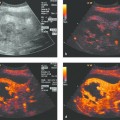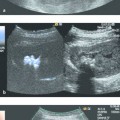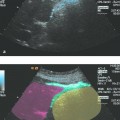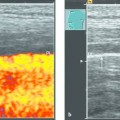Hygiene Management
Image-guided interventional procedures are increasingly used for a variety of therapeutic and diagnostic applications. To date, however, the procedures themselves and the hygienic requirements for medical products used in these procedures have not been consistently or adequately regulated due to a lack of guidelines. Besides the proper manufacture and preparation of the medical products themselves, a practical and effective approach to hygiene must involve a comprehensive process in which the individual steps are identified and described in detail.
8.1 General Hygienic Requirements
Hygienic requirements must be tailored to the specific diagnostic procedure that is to be performed. The scope of necessary measures should be described within the framework of the risk management program of the office or department of a medical facility.
8.1.1 Personal Protective Equipment and Coverings
Personal protective equipment includes gowns, gloves, masks, hair coverings (caps), and protective eyewear. Not all of these items will be needed in every case. Surgical gowns, gloves, masks, and hair coverings are also classified as medical products. Since personal protective equipment involves various regulatory areas relating to infection prevention and occupational safety, it should be of interest to hygienists as well as occupational physicians. The information in this chapter is intended as a guide to be considered in the formulation of standard operating procedures.
Recommendations issued by the Commission on Hospital Hygiene and Infection Prevention at the Robert Koch Institute address the hygienic aspects of surgical operations and minor invasive procedures with or without an increased risk of infection. For minor invasive procedures that are not associated with an increased risk of infection, it is sufficient to carry out a hygienic handwash or handrub and don a protective gown and (generally sterile) gloves. Operations or minor invasive procedures that are associated with an increased risk of infection require a cap, mask, sterile protective gown (surgical gown), and sterile gloves.1
Protective gowns should be changed for each new patient, or replaced after every procedure. Sterile gowns should have long sleeves, while short sleeves are preferred for nonsterile gowns. If disposable gowns are not used, a validated decontamination process should be used, even at the office level, to ensure proper cleaning and disinfection.2,3
Sterile gloves are changed for each new patient and are donned over the air-dried hands following surgical hand antisepsis (surgical scrub). In selecting a glove, the properties of the material should be considered in addition to worker safety laws.4 Polyethylene is a recommended glove material for light-duty situations and for double gloving in patients with a possible latex intolerance, for example. Powder-free Biogel gloves containing natural latex rubber have also proven effective with their good tactile sensitivity and inner coating for easier donning. A double glove configuration with a puncture indicator system is also available if needed. Latex (or appropriate latex-free) gloves should be used in heavy-duty situations such as surgical operations and catheter insertions.2
A multi-layer surgical mask may be necessary for the protection of staff or patients.1 Masks can prevent contamination of medical personnel and can also protect patients, especially ones who are immunocompromised. An effective mask should completely cover the mouth, nose, and beard if present. The level of protection afforded by the mask should conform to the hygiene program of the institution. It may be necessary, for example, to use masks with an FFP1 rating that are impermeable to fluids. The quality rating of a mask also indicates its filtration efficiency.5,6 Filter efficiencies for various masks are listed in ▶ Table 8.1. Masks are changed for each new patient and must also be changed if contaminated or wetted through. Masks should not be reused after removal from the mouth and/or nose (pulled below the chin). It has been shown that just one well-fitting face mask can prevent the inhalation of microorganisms.5,6
| Type of mask | BFE | Total leakage (particle size ≤0.6 μm) | |
| Surgical mask | Type I | >95% | |
| Type II | >98% | ||
| Respiratory protection | FFP 1 (R or NR) | >22% | |
| FFP 2 (R or NR) | >8% | ||
| FFP 3 (R or NR) | >2% | ||
| Abbreviations: BFE, bacteriological filtering efficiency; FFP, filtering face piece; NR, not reusable; R: reusable | |||
The wearing of a cap and/or protective eyewear that is changed for each new patient may also be necessary for reasons of staff and patient safety.1 In selecting protective eyewear, it should be determined whether blood or secretions are likely to be spattered, as this would require protective eyewear with side shields. It should also be determined whether the protective eyewear material is compatible with the disinfectants used in the facility and whether corrective eyeglasses should be covered.
8.1.2 Disposable Probe Covers
In the procurement of disposable ultrasound probe covers, it should be noted that both sterile and nonsterile products are available. Sterile products should be individually packaged in pouches that have been tested for their integrity. As a general rule, only sterile, disposable probe covers should be used in interventional procedures. According to Schrader, tests for package integrity are not regulated, and random testing may be done at the facility without testing an entire batch.7 It should be determined whether covers made of latex-free material are available. Even the use of disposable probe covers does not eliminate the need for probe decontamination as described in the next subsection, since studies have detected microorganisms on used ultrasound probes even when disposable covers were used.8–12 Probe contamination rates of 2 to 5% have been described with latex condom sheaths.10,12 As a result, the ultrasound probe should be cleaned and disinfected after every examination even when a disposable probe cover has been used13,14 and the probe will be sterilized.
8.1.3 Ultrasound Gel
The ultrasound gel used in interventional ultrasound procedures should be sterile. Package sizes should match the gel requirement for one examination to ensure that residual product will not be used on additional patients. Ultrasound gel comes packaged in syringes or foil pouches. A hygienically safer and more user-friendly option is to purchase sterile, disposable probe covers that are prefilled with sterile gel. Disposable probe covers can be applied under aseptic conditions when manufacturers’ instructions are followed. Ultrasound gels have been identified as a potential vehicle for nosocomial infections.14–21
8.2 Hand Antisepsis and Skin Preparation
Hand antisepsis Hand antisepsis is the most important measure for protecting both staff and patients in the everyday practice of medicine. Fingernails should be trimmed short and round because most hand flora occur around and under the nails.4 Nail polish should not be used, as it can shield microorganisms from the effects of hand antiseptics, and artificial nails should not be worn.22
Stay updated, free articles. Join our Telegram channel

Full access? Get Clinical Tree








